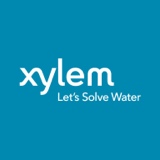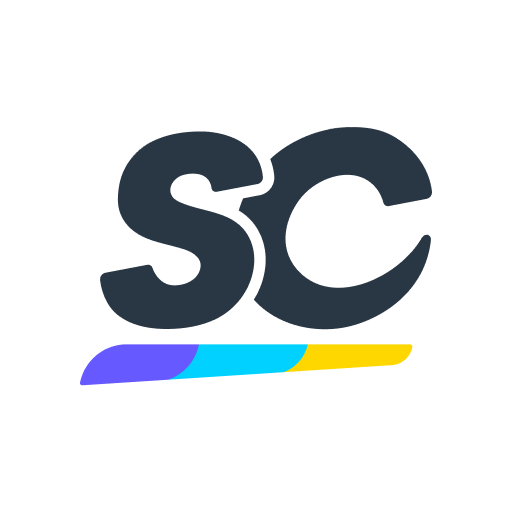Information
-
Audit Title
-
Document No.
-
Client / Site
-
Conducted on
-
Prepared by
-
Location
-
Personnel
21-200 01/02 ESH Policy and values
-
ESH policy statement<br><br>
-
Does management ensure that employees use the ESH policy and ESH Management System to support ITT’s: 1) core values, which include respect, responsibility, and integrity; and, 2) integrated strategic processes, which include profitable growth, resource optimization, operational excellence, leadership and learning?<br><br>
-
Does the ESH policy meet or exceed relevant ESH legislation, regulations, and other requirements?<br><br>Does the ESH policy include a commitment to: 1) pollution prevention, and prevention of injury and ill health; 2) continual improvement in ESH management and performance; 3) being a leader in environmental protection, human health and safety, worldwide; 4) dedicated to world class products and customer support; and, 5) creating a safe and healthy workplace.<br><br>
-
Does the site make this policy available to interested parties and the public?<br><br>
-
Does the site periodically review this policy to ensure that it remains relevant and appropriate and update if required?
21-100 3.4 Objectives ,targets and Programs
-
Has the site established site-specific ESH objectives and targets that are consistent with ESH policy and prioritized based on Environmental aspects, impacts, OSH risks and applicable regulatory requirements? <br><br>
-
Have ESH programs been established, implemented, reviewed and updated at least annualy to achieve stated objectives and targets?
21-300 01 Env aspects , OSH risks
-
Does the site identify their environmental aspects and OSH risks, and their prioritization according to their established procedures?<br><br>
-
Are aspects/impacts and OSH risks reassessed as defined (at least annually) and when there are changes in regulations or site processes and following incidences that reflect breakdowns in ESH programs, or the ESHMS?<br><br>
-
Has senior management ensured that resources are budgeted and allocated to control OSH risks and significant aspects, and to meet associated objectives and targets?<br><br>
-
Are significant aspects and risks taken into account when establishing, implementing and maintaining operational controls?<br><br>
-
Is a list of the aspects and risks published and made available to site/site employees at least once a year?<br><br>
-
Does senior site or site management review the ESH aspects and risks on an annual basis?
21-100 4.4 Communication
-
Has the site developed, implemented, and maintained processes to communicate environmental aspects, OSH risks and the ESH management system throughout the site? <br><br>
-
Has the site developed, implemented, and maintained processes to communicate environmental aspects and OSH risks to visitors, contractors, and when requested, regulatory agencies?<br><br>
-
Have processes been developed, implemented and maintained to receive, document, and respond to relevant communication from external interested parties?<br><br>
-
Are the communication processes periodically reviewed for effectiveness?
21-100 5.5 Nonconformity , corrective and preventive actions
-
Has the site developed, implemented, and maintained procedures and processes for dealing with corrective and preventive actions?<br><br>
-
Are corrective and preventive actions tracked to completion with associated records maintained and effectiveness determined?<br><br>
-
Are site environmental aspects/impacts and OSH risks , updated following corrective and preventive actions?
21-300 02 Legal requirements
-
Does the site identify their environmental aspects and OSH risks, and their prioritization according to their established procedures?<br><br>
-
Are aspects/impacts and OSH risks reassessed as defined (at least annually) and when there are changes in regulations or site processes and following incidences that reflect breakdowns in ESH programs, or the ESHMS?<br><br>
-
Has senior management ensured that resources are budgeted and allocated to control OSH risks and significant aspects, and to meet associated objectives and targets?<br><br>
-
Are significant aspects and risks taken into account when establishing, implementing and maintaining operational controls?<br><br>
-
Is a list of the aspects and risks published and made available to site/site employees at least once a year?<br><br>
-
Does senior site or site management review the ESH aspects and risks on an annual basis?
21-200 03 Resources , Roles and Responsibilities
-
Has the site implemented and maintained an ESH accountability program that follows the requirements of 21-200.03? (ESH responsibilities defined, measured and recognized?)”.
-
Are site personnel authorized, required and empowered to: 1) shut down operations where imminent danger to people or the environment exists, with appropriate management coordination; 2) make appropriate notifications regarding ESH incidents - e.g. injuries, near misses, fires, spills, etc. ; 3) report unsafe acts and conditions, and work with management to initiate corrective actions for ESH program non-compliance; 4) assess and review accessible operations, on or off-site for regulatory compliance and compliance with ESH policies; ?
-
Has site management appointed and given due authority to ESH coordinators who have the appropriate background to implement and manage an effective ESH program that includes occupational/industrial hygiene, environmental protection, safety, pollution prevention, waste management, health and fire prevention/protection as defined in 21-200.03?
-
Does the site reward and recognize strong ESH performance by individuals and/or by teams with positive reinforcement, and ensure that there are defined consequences for poor performance in accordance with 21-200.03?
21-400.03 procurement
-
establish and implement processes to identify, evaluate and control potential health and safety risks as well as environmental impacts as related to procurement of supplies, equipment, raw materials, chemicals, and other goods and related services before introduction <br>
-
establish requirements for supplies, equipment, raw materials, chemicals, and other goods and related services purchased by each Unit to control potential health and safety risks and environmental impacts.<br>
-
ensure that purchased products, raw materials, and other goods and related services
21-400.06 Education and training
-
employee training program:A written training plan must be established annually. The training plan must include course topics and the anticipated audience.
-
Evaluation: Completion of the training plan for the previous year must be reviewed and documented
21-500.02 documenting and preventing occupational injuries
-
method for identifying hazards, initiating corrective and preventive action.<br>
-
Procedures for the reporting of incidents, injuries and illnesses. These reporting procedures apply to employees, contractors and visitors. <br>
-
Procedures to notify the Group ESH Department and Corporate ESH of incidents detailed in ESH Procedure “Reporting and Resolving ESH Incidents and Potential Hazards” (See Section 8.0), within 24 hours of occurrence or report <br>
-
Procedures to determine if an injury or illness is work-related.<br>
-
Documented investigations of every incident, injury and illness to determine the root cause. <br>
-
Implementation of the SAFE Accident Prevention program<br>1. Use of the Accident Investigation Report Form (See Section 8.0), or equivalent, if approved by ITT ESH Director or designee.<br>2. Use of the Root Cause Analysis (See Section 8.0), or equivalent, if approved by ITT ESH Director or designee.<br>3. A corrective action plan to prevent recurrence.<br><br>
-
Procedures to ensure compliance with all applicable regulations and posting requirements. <br>
-
Posting occupational injury and illness frequency and severity metrics at least quarterly.<br>
-
Reviewing past injury and illness statistics to define trends and identify preventive measures at least annually.
21-400.14 DRINKING WATER MANAGEMENT
-
transport system protected for contamination<br>
-
contingency plan <br>
-
compliance<br>
-
tests if water not supplied by Municipality<br>
-
transport equipments inspected
21-400.15 WASTE MANAGEMENT
-
documenting and accounting disposal <br>
-
storage areas designed and <br>identified
-
spill and weather protected<br>
-
compliance and contractors according to law
21-400.16 AIR EMISSIONS MANAGEMENT
-
inventory and compliance<br>
-
inadvertent release controlled
21-400.17 WASTEWATER MANAGEMENT
-
streams identification and characterization <br>
-
control of discharges <br>
-
permits <br>
-
accidental release , <br>
-
preventing contamination of streams
21-400.18 MANAGEMENT OF HAZARDOUS MATERIALS
-
secondary containment <br>
-
containment 110% vol of the largest container<br>
-
containment construction material compatible with stored material <br>
-
labeling <br>
-
MSDS availability and known by the employees <br>
-
on-going training for haz mat handling <br>
-
chemicals inventory (see content in policy<br>
-
procedures to control leaks and spills
21-400.19 ASBESTOS IN PREMISES
-
survey for id <br>
-
maintenance only by trained personnel
-
removal procedure
21-400.20 LIFE SAFETY
-
2 means of egress / story <br>
-
fire-resistant interior finishes<br>
-
fire alarm system <br>
-
1-2 fire drills / year <br>
-
Emergency exit route maps posted and current<br>
-
Emergency exit routes/ doors kept free of obstructions
21-400.21 FIRE PREVENTION AND PROTECTION
-
FRA / location <br>
-
fire alarm - suppression systems and smoke detectors connected to central alarm system <br>
-
fire events investigation<br>
-
fire producing damage >1,000 $ be reported in MESH <br>
-
procedure for handling and storing flammables<br>
-
hot work program<br>
-
labeling of flammables pipes <br>
-
Fire extinguishers access free of obstruction<br>
-
All extinguishers inspected within one month of current month
21-400.22 EMERGENCY EYEWASHES AND SHOWERS
-
located close to hazards < 30 m or 10 sec <br>
-
required if according to MSDS eye may be damaged by splash <br>
-
signs visible<br>
-
free path all time<br>
-
well maintained <br>
-
15 l / min for min of 15 min <br>
-
once activated : free hands operation,
21-400.23 MATERIAL HANDLING EQUIPMENT
-
inventory<br>
-
capacity ratings <br><br>
-
inspections<br>
-
employee training<br>
-
battery charging area : emerg shower and eyewash / ventilated area / no smoking sign
21-40024¸LONE OPERATOR
-
program: determination of low / medium and high hazards areas <br>
-
High hazards (distribution panels, energized equip, >50 V, permit req. Confined space , working with conc. Acids or basis) : no lone operator is allowed
21-400.25 EMERGENCY PREPAREDNESS AND RESPONSE
-
written ERP: evacuation procedure<br>
-
methods to account people<br>
-
identification of potential emergency situations <br>
-
inspections and maintenance of emergency equipments<br>
-
procedures to handle off-hours situations,<br>
-
training of related employees
21-400.26 PERSONAL PROTECTIVE EQUIPMENT (PPE)
-
only used when hazards can't be eliminated<br>
-
properly designed<br>
-
approved by local authority <br>
-
employees responsible for maintaining the ppe<br>
-
hazard assessment before defining the use of ppe <br>
-
training for use
21-400.27 CONFINED SPACE ENTRY
-
identification<br>
-
labeling, <br>
-
exposed employees training <br>
-
procedure <br>
-
to be informed to contractors of confined spaces
21-400.28 ELECTRICAL SAFETY
-
designed and qualified person for overall electrical distribution updated if circuit is modified<br>
-
inspection and maintenance program <br>
-
wiring according to codes <br>
-
periodic training <br>
-
power tools double insulated or grounded <br>
-
labeled ( Volt and current) with permanent marking method
-
wet or damp areas : GFCI,<br>
-
extension cords not used for more than 30 days <br>
-
cords defects-free <br>
-
All work with a potential exposure to energized equipment or components is only conducted by employees specifically trained for such work<br>
-
Written documentation of this training must be retained. <br>
-
Arc flash hazards, including calculation of incident energy, arc flash hazard risk category, arc flash boundaries<br>
-
required PPE and labeling<br>
-
must be determined prior to commencement of work<br>
-
Equipment power cords no longer than six feet
21-400.29 LOCKOUT / TAGOUT
-
written procedure <br>
-
individual locks and tags <br>
-
new equipments considered <br><br>
-
all sources of energy identified <br><br>
-
double-blocked flammable/ high temp & pressure / corrosive pipes and drained before work
-
annual training
21-400.30 STORAGE AND HANDLING OF COMPRESSED GASES
-
training <br>
-
labeled tanks <br>
-
cylinders not re-used for gas diff than original <br>
-
weather/ corrosion and physical damage protection <br>
-
stored away from incompatible gases ( e.g. flammable and O2) <br>
-
protective devices like caps <br>
-
indoor storage min m as possible , and if indoor equipped with fire protection <br>
-
empty and full tanks separately and segregated by barrier ( e.g. wall)
21-400.31 OPERATION AND MAINTENANCE OF PRESSURIZED TANKS
-
inventory <br>
-
regular inspection and cleaning of tanks/ piping system and valves for boilers: int and ext inspection ( corrosion , cracks , wall thickness annually ) <br>
-
training <br>
-
shut-down procedures
21-400.32 ERGONOMICS
-
identification of ergonomic hazards<br>
-
periodic review of ergonomic injuries to perform hazard assessments<br>
-
training<br>
-
medical management program for ergonomic injuries
21-400.33 MACHINE GUARDING
-
for normal / special and setup operations, <br>
-
disciplinary procedures in place <br>
-
preventive maintenance of the guarding <br>
-
annual review of machines guarding <br>
-
grinders: tongue Guard was not kept within ¼” from wheel at all ; Tool Rest was not kept within1/8” from wheel at all times <br>bolted <br>
-
eyes protection <br>
-
wheel maintenance and test
21-400.34 THE HEALTH PROGRAM
-
trained first aid employees ( for shifts with more than 10 empl. ) if First aid center >10 min away<br>
-
principles ( annually) - basic first aid<br>
-
2 years- CPR/2 years -AED/2 years - mgmt first aid supplies /years- blood borne pathogens (annually) <br>
-
AED for >50 employees<br>
-
maintenance of first aid kits ( including expiration date)<br>
-
identification Health care providers<br>
-
IH monitoring <br>
-
confidential records<br>
-
employment tests if required by the law <br>
-
procedures for medical management of emergencies
21-400.35 FLEET SAFETY
-
Valid driving licenses ( not necessary to keep copies) <br>
-
procedure for temporarily removal of permits to drive company cars (see new cars with occupant protection systems<br>
-
transport of goods: fire extinguishers, first aid kits and any other local requirement <br>
-
mobile phone that may interfere driving prohibited
21-400.36 AVIAN FLU/PANDEMIC RISK MITIGATION
-
Avian Flu Pandemic emergency response guidelines
21-400.37 RETURNED GOODS
-
written procedure to identify haz or potential haz returned goods <br>
-
identify necessary ppes<br>
-
medical protection ( vaccination)<br>
-
training for identification ( asbestos, biological , chemical radiation)
21-400.38 FIELD SERVICE
-
documented risk assessment before work , <br>
-
training <br>
-
MSDS in SOW<br>
-
Field Service employees trained CPR and first aid<br>
-
procedure to collect and dispose wastes<br>
-
available fire extinguishers and training for the use
-
Add drawing
-
Add drawing




















